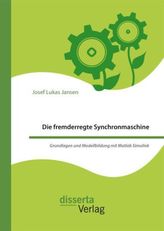And on this Rock I Will Build My Church. Vol.1
8
%
1477 Kč 1 602 Kč
Sleva až 70% u třetiny knih
Textprobe:
CHAPTER III.THE APOSTOLIC AGE:
20) Sources and Literature of the Apostolic Age.I. Sources.1. The Canonical Books of the New Testament. The twentyseven books of the New Testament are better supported than any ancient classic, both by a chain of external testimonies which reaches up almost to the close of the apostolic age, and by the internal evidence of a spiritual depth and unction which raises them far above the best productions of the second century. The church has undoubtedly been guided by the Holy Spirit in the selection and final determination of the Christian canon. But this does, of course, not supersede the necessity of criticism, nor is the evidence equally strong in the case of the seven Eusebian Antilegomena. The Tübingen and Leyden schools recognized at first only five books of the New Testament as authentic, namely, four Epistles of Paul-Romans, First and Second Corinthians, and Galatians-and the Revelation of John. But the progress of research leads more and more to positive results, and nearly all the Epistles of Paul now find advocates among liberal critics.(Hilgenfeld and Lipsius admit seven, ad-ding First Thessalonians, Philippians, and Philemon; Renan concedes also Second Thessalonians, and Colossians to be Pauline, thus swelling the number of genuine Epistles to nine.) The chief facts and doctrines of apostolic Christianity are sufficiently guaranteed even by those five documents, which are admitted by the extreme left of modern criticism. The Acts of the Apostles give us the external, the Epistles the internal history of primitive Christianity. They are inde-pendent contemporaneous compositions and never refer to each other; probably Luke never read the Epistles of Paul, and Paul never read the Acts of Luke, although he no doubt supplied much valuable information to Luke. But indirectly they illustrate and confirm each other by a number of coincidences which have great evidential value, all the more as these coincidences are undesigned and incidental. Had they been composed by post-apostolic writers, the agreement would have been more complete, minor disagreements would have been avoided, and the lacunae in the Acts supplied, especially in regard to the closing labors and death of Peter and Paul.
The Acts bear on the face all the marks of an original, fresh, and trustworthy narrative of contemporaneous events de-rived from the best sources of information, and in great part from personal observation and experience. The authors-hip of Luke, the companion of Paul, is conceded by a majority of the best modern scholars, even by Ewald. And this fact alone establishes the credibility. Renan (in his St. Paul, ch.1) admirably calls the Acts a book of joy, of serene ardor. Since the Homeric poems no book has been seen full of such fresh sensations. A breeze of morning, an odor of the sea, if I dare express it so, inspiring something joyful and strong, penetrates the whole book, and makes it an excellent compagnon de voyage, the exquisite breviary for him who is searching for ancient remains on the seas of the south. This is the second idyl of Christianity. The Lakeof Tiberias and its fishing barks had furnished the first. Now, a more powerful breeze, aspirations toward more distant lands, draw us out into the open sea.
2. The Post-Apostolic and Patristic writings are full of reminiscences of, and references to, the apostolic books, and as dependent on them as the river is upon its fountain.
3. The Apocryphal and Heretical literature. The numerous Apocryphal Acts, Epistles, and Apocalypses were prompted by the same motives of curiosity and dogmatic interest as the Apocryphal Gospels, and have a similar apologetic, though very little historical, value. The heretical character is, however, more strongly marked. They have not yet been sufficiently investigated. Lipsius (in Smith and Wace's, Dict. of Christ. Biog. vol. I. p. 27) divides the Apocryphal Acts into four classes:(1)Ebionitic; (2) Gnosti
| Autor: | Schaff, Philip |
| Nakladatel: | disserta |
| Rok vydání: | 2017 |
| Jazyk : | Angličtina |
| Vazba: | Paperback / softback |
| Počet stran: | 752 |
Mohlo by se vám také líbit..









